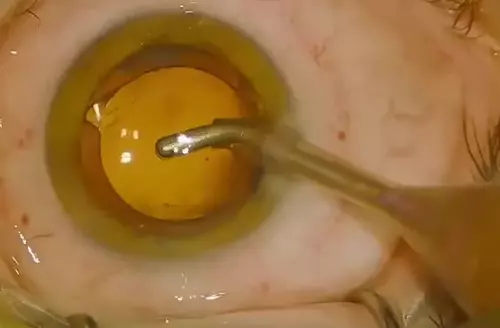What lenses are used for cataract surgery? Their choice depends on several factors. First and foremost, it depends on the type of vision defects the patient is exposed to. The ophthalmologist will recommend which lens is better for cataract and will help the patient to recover the vision to the maximum extent possible and to live comfortably with it. There are many nuances of how one artificial lens differs from another.
An intraocular lens (IOL) replacement surgery will help you see the world clearly again. It is also called an artificial lens. The implantation surgery lasts on average 10-20 minutes, and the rehabilitation period is very short. You will regain full vision in a month.
Read also: Multifocal Lens Patient Reviews
What types of artificial lenses are there?
The best cataract lenses are those made from proprietary materials, according to official standards. The most popular are IOLs made of AcrySof material. They are produced by the world leader in the market of medicines and ophthalmic equipment – the foreign company Alcon.
See also: Multifocal Lens Implant: Review and Cost
The type of surgery: soft and hard

Artificial lenses can be soft and hard. The latter are, we can say, in the past. They were used for open surgery. Today it is a rarity. Such surgeries are performed on patients with contraindications to laser or ultrasound interventions. Minimally invasive surgery uses soft IOLs. To place it in place of the crystalline lens, the surgeon only needs to make a 2-millimeter micro incision, which quickly heals without stitching.
See also: Average Cost of Cataract Surgery in the US
By type of vision correction: monofocal and multifocal
In essence, intraocular lenses are microscopic glasses placed inside the eyeball. Depending on the method of vision correction, they can be monofocal or multifocal.
Intraocular lenses are microscopic glasses placed inside the eye
Monofocal intraocular lenses are most frequently used in cataract surgeries. After the surgery, the patient has better far distance vision. Such intraocular lens corrects myopia, but it is not an equivalent replacement for the natural lens. For instance, it can be difficult to see at close range and you will need to wear reading glasses.
Multifocal intraocular lenses belong to the premium class. When patients answer the question “Which lens is better for cataracts?” reviews of the positive outcome of surgery on the side of these IOLs. The main advantage lies in the unique structure of the optics. They are a worthy alternative to the natural lens. It is possible to focus the gaze and clearly distinguish objects at different distances – both far and close, so you can forget about glasses for many years. Those who have already appreciated all the advantages of multifocal lenses say that they are the best lens for cataracts.
Find more information about Laser Cataract Surgery
What is the best lens for cataract complicated by astigmatism?

In deciding to undergo cataract surgery you can kill two birds with one stone – get rid of cataract and astigmatism as well. This is a disorder in which the ability to focus is lost due to changes in the regular spherical shape of the cornea or crystalline lens. A person sees the world as blurred, with no clear boundaries of objects. In this case, the patient may be recommended multifocal toric IOLs.
These are the most advanced artificial lenses. They have a special shape – they have a built-in cylinder that compensates for the irregular shape of the cornea. Thus, two problems are solved. Even corrective glasses are not needed.
These are the most expensive lenses. Your doctor will decide if you opt for them or choose a cheaper option, depending on the medical indications. Only an ophthalmologist can decide in each case what are the best lenses for cataracts.
Interesting article: Cataract Surgery Recovery Time
By structure: spherical and aspherical
There are lenses that have a spherical, aspherical design and avoid additional glare and peripheral distortion – these lenses tend to be more expensive. They are mostly made in the U.S. and Germany.
Spherical lenses refract light differently in the center of the lens and at the edge. The light is scattered, the picture seems fuzzy, like lighted photographic film. Aspherical IOLs refract light equally over the entire area of the lens. They are more expensive, but preferable.
An aspherical-design crystalline lens gives:
- A high-quality image;
- Better color reproduction and contrast of the picture;
- Minimal risk of flare (blinding) in the dark.
Such lenses are suitable for those who work at night or drive a car in the dark.
What else should you pay attention to when choosing Cataract Surgery Lenses?

Crystalline lenses are made with a UV-filter. A person’s lens turns yellow over the years. This is a protective response of the retina to the harmful effects of sunlight. That’s why premium models are tinted yellowish for maximum natural color perception and protection from negative light radiation.
It is better to find out which lens to use for cataract surgery beforehand, to study the information and go to the ophthalmology center prepared with a list of questions. Only after a comprehensive and detailed diagnosis the doctor will say which lens is better for a cataract in your particular case. The choice is up to the patient. Depending on his/her profession, hobbies, activity and financial possibilities he/she will choose those Cataract Surgery Lenses (IOLs) which will provide him/her with clear vision and qualitatively new level of life.





